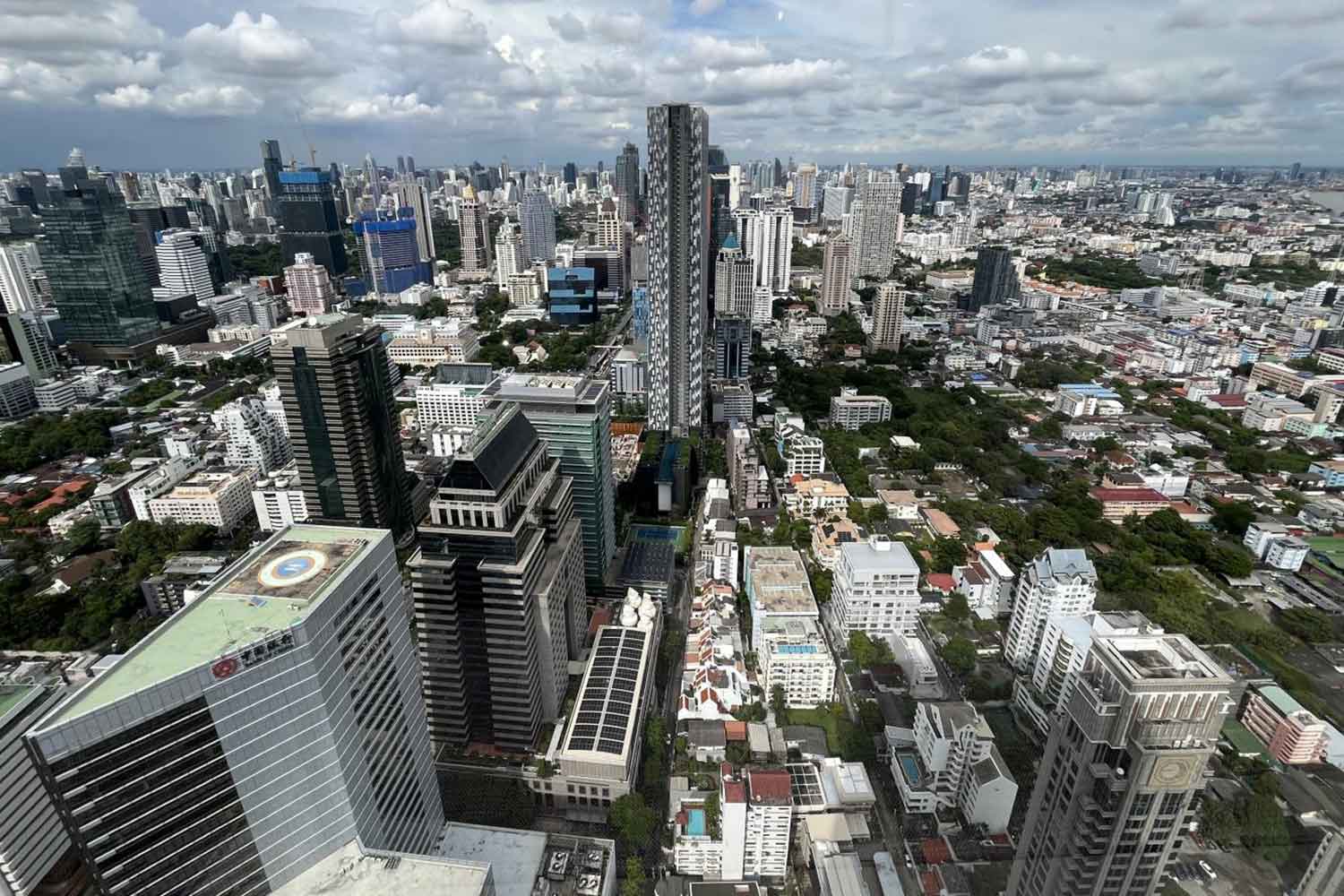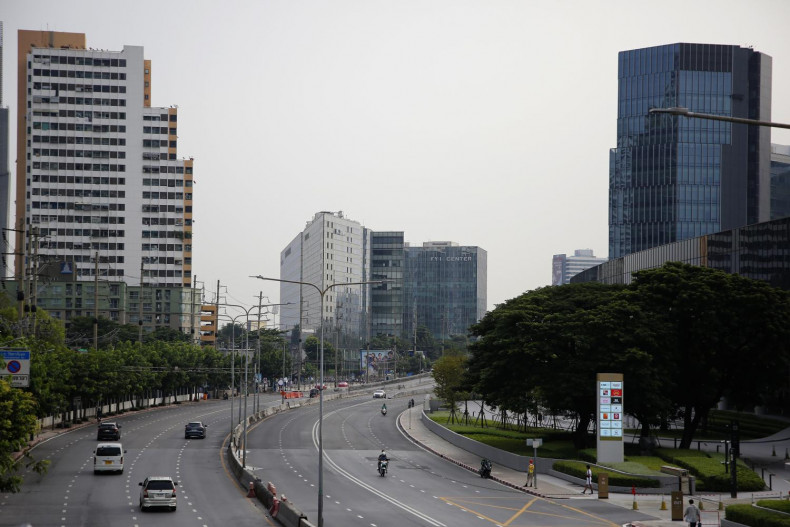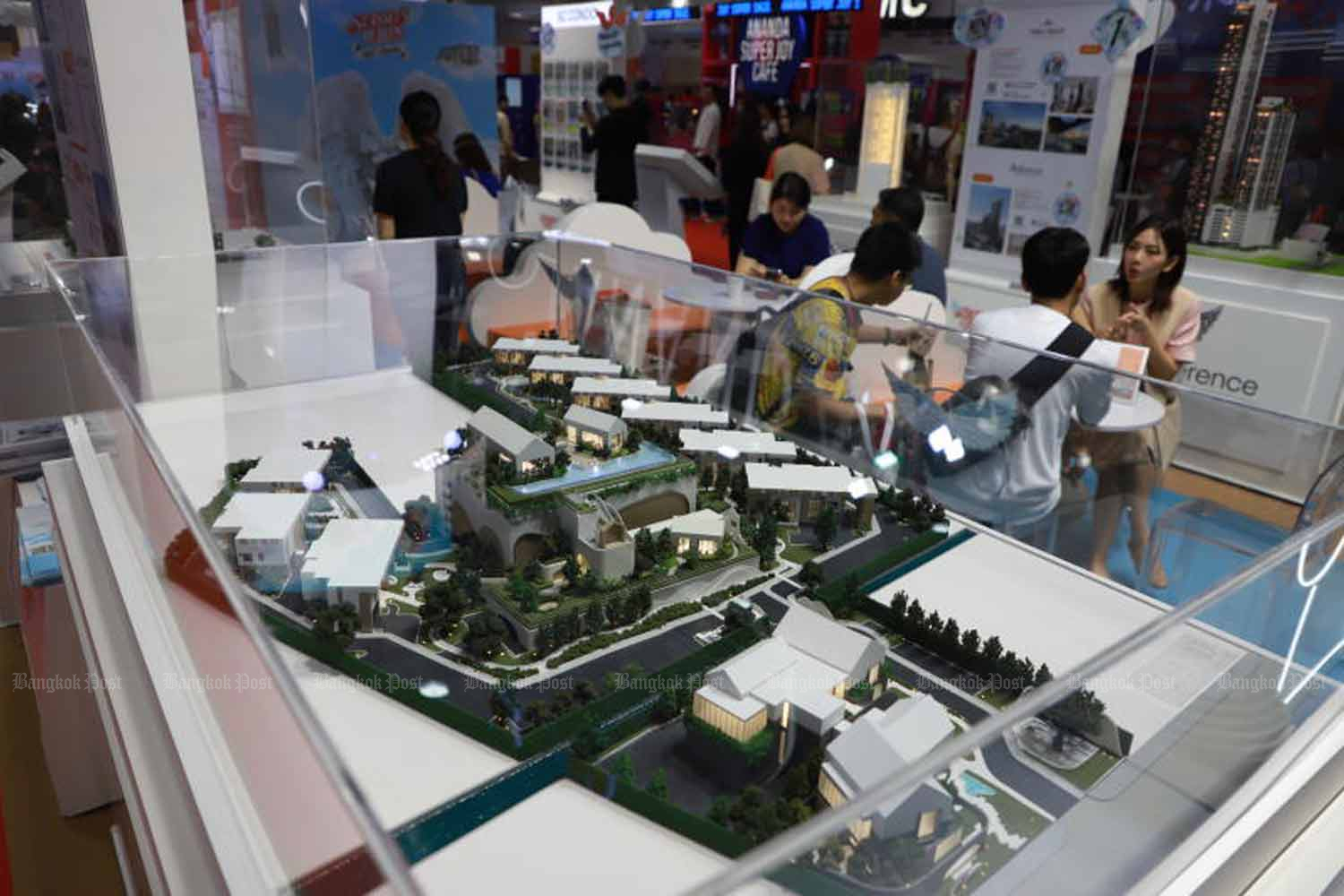Thailand’s serviced industrial land market in the first half of 2024 posted broad-based growth, with stronger activity in new supply, land sales, sales velocity, and asking prices, led by demand in the Eastern Economic Corridor. Market observers note that this period underscored Thailand’s rising attractiveness as a hub for high-value, technology-driven industries, supported by both local and international investment and government incentives. The latest Knight Frank Thailand analysis shows a robust, sustained appetite for serviced industrial land, particularly in the EEC, as firms anticipate continued expansion and operational expansion in Thailand’s strategic industrial belts. This article dives into the detailed market dynamics, regional patterns, pricing trends, investment flows, and the broader implications for developers, policymakers, and market participants in Thailand’s industrial land sector.
Market Overview: Demand, Supply, and Velocity in H1 2024
The serviced industrial land market in the first half of 2024 demonstrated growth across all primary indicators, a sign of resilience even as supply dynamics were only modestly positive. Knight Frank Thailand reported that 8,063 rai of serviced industrial land were sold or leased nationwide during H1 2024, marking a steep 53% increase compared with the second half of 2023. This surge in activity reflects heightened demand from both domestic and international buyers looking to secure strategic locations for industrial development, manufacturing, and logistics operations. The strong momentum in transactions underscores a broader trend toward reshoring and regionalization of supply chains, with Thailand positioned as a key node in Southeast Asia’s industrial network.
New supply added in the period was 886 rai, a relatively modest addition that kept the total stock at 181,280 rai, up only 0.5% from the prior period. The modest expansion in land supply, juxtaposed with a substantial jump in demand, contributed to a tightening market dynamic. In the eyes of industry participants, rising demand against a slowly expanding pool of available land typically translates into firmer pricing, improved occupancy metrics, and longer-term confidence among developers and investors about targeted rollouts in prime locations.
The surge in demand, when paired with the constrained growth in new supply, pushed the cumulative sales rate to 86.9% in H1 2024, representing a 3.9 percentage-point rise from the second half of 2023. This elevated sales rate indicates that a large portion of the serviced industrial land stock has been absorbed, with a sense that market momentum could sustain—especially if regulatory incentives and infrastructure improvements support continued activity. The EEC emerged as the central engine of this expansion, driving a substantial portion of the market’s performance during the period.
A closer look at regional performance reveals that the EEC’s dominance was pronounced. In H1 2024, land transactions within the EEC totaled 4,869 rai, accounting for 60% of national activity. This concentration underscores the EEC’s role as a strategic hub for high-value manufacturing and advanced industries, where location, infrastructure, and policy support converge to attract investment. The prominence of the EEC’s performance also reflects the strength of government incentives and the efficacy of the belt’s integrated logistics footprint in attracting and sustaining project activity.
Beyond the EEC, strong transaction activity appeared in the central region and in eastern provinces outside the EEC’s core zone. Notably, land transactions in Prachin Buri and Sa Kaeo reached meaningful volumes, alongside transactions in Chanthaburi and Trat, where 1,297 rai and 1,274 rai of land were sold or leased, respectively. This suggests a widening geographic footprint for serviced industrial land demand, with manufacturers and logistics operators seeking diversified sites to optimize supply chains, labor access, and port connectivity or to pre-empt future development opportunities in adjacent districts.
From a broader market perspective, these dynamics illustrate a balancing act between the need to locate near premier infrastructure, ports, and corridors, and the reality that supply is still being provisioned in measured increments. The market’s health in H1 2024 appears to rest on the twin factors of attractive demand fundamentals and a disciplined approach to new supply, ensuring that inventory remains aligned with buyers’ evolving needs and price expectations.
In terms of pricing, the market demonstrated resilience with a nationwide uptick in average asking prices. The national average rose by 1.6% to 6.2 million baht per rai, up from 6.0 million baht per rai in the second half of 2023. This price evolution signals a market that is willing to bear higher prices as buyers seek premium spaces with enhanced accessibility and value creation potential. The top tier of the market continued to be concentrated in areas with superior infrastructure and proximity to ports and major logistics corridors.
Within the price spectrum, Greater Bangkok stood out with the highest average asking price, reaching 11.1 million baht per rai, a 2.2% increase. This aligns with Bangkok’s role as a magnet for high-value industrial land, office-warehouse ecosystems, and logistics networks serving national and regional distribution needs. The peak price observed in the period occurred at Gemopolis Industrial Estate in Samut Prakan, where asking prices reached as high as 16 million baht per rai, reflecting the premium associated with a premier industrial estate with established amenities and connectivity.
The Eastern Economic Corridor posted an average price of 6.7 million baht per rai, up 1.2%, reinforcing the EEC’s position as a dynamic growth engine that combines favorable land economics with strategic policy incentives. The EEC also exposed the widest range of asking prices, from 3.6 million baht per rai to 12 million baht per rai, illustrating price dispersion driven by location, frontage, road connectivity, and proximity to major logistics routes and export terminals.
In contrast, the Northeast recorded the lowest average asking prices, starting at 2.2 million baht per rai, with the regional average remaining unchanged from the second half of 2023 at 2.9 million baht per rai. This regional disparity reflects the multifaceted geography of Thailand’s industrial land market, where proximity to developed logistics corridors, ports, and labor markets can create divergent pricing tiers even among seemingly similar land assets. The pricing landscape thus underscores the premium attached to well-connected, policy-supported nodes within the country’s broader industrial geography.
Several price determinants emerged as particularly influential in shaping market outcomes. Areas along Motorway Route 7, which connects Bangkok to Ban Chang, consistently commanded higher price bands due to enhanced accessibility and reduced transport times for goods and personnel. Regions adjacent to major ports, notably Laem Chabang and Map Ta Phut, showed elevated demand, with investors and tenants valuing proximity to port facilities, developed hinterlands, and well-established industrial ecosystems. These dynamics suggest that infrastructure improvements and logistics capacity remain crucial levers for price formation in Thailand’s serviced industrial land market.
Another salient factor was the variance in price levels within sub-regions of the EEC, where the geographic spread of project locations created a broad continuum of asking prices. The EEC’s expansive portfolio of industrial zones combined with targeted incentives continues to attract high-end manufacturing and electronics clusters, which in turn sustains higher land values in select pockets of the corridor. Conversely, the Northeast’s comparatively lower price environment reflects its current stage of market development and the relative depth of supply, which could change as regional infrastructure projects mature and demand centers shift over time.
These pricing dynamics collectively illustrate a market characterized by strong demand momentum, selective supply growth, and geographic differentiation driven by infrastructure, policy support, and proximity to logistics anchors. For market participants, this means pursuing a differentiated strategy aligned with location-specific value drivers, focusing on high-impact nodes within the EEC and Greater Bangkok for premium land products, while exploring value-oriented opportunities in developing zones in the central region and select northeastern districts where long-term growth potential exists.
Drivers: Why the H1 2024 Surge Happened and What It Means
The strongest driver of activity during the first half of 2024 was the sustained demand for serviced industrial land within Thailand, with the Eastern Economic Corridor acting as the principal catalyst. The executive director and head of occupier strategy and solutions at Knight Frank Thailand, Marcus Burtenshaw, remarked on the period as showcasing a robust, sustained demand for serviced industrial land in Thailand, particularly in the EEC. He described the trend as underlining Thailand’s growing appeal as a hub for high-value, technology-driven industries, noting that investments from both local and international players—coupled with substantial government incentives—position this sector for continued growth.
This demand dynamic is closely linked to several structural and policy factors. First, the EEC’s attractiveness is reinforced by strategic location, integrated logistics networks, and a governance framework designed to support industrial diversification and advanced manufacturing. The EEC has emerged as a magnet for projects that rely on proximity to ports, access to skilled labor, and the availability of road and rail corridors that reduce lead times and transportation costs. The fact that 60% of all national serviced industrial land transactions occurred within the EEC in H1 2024 demonstrates how critical the corridor is to the broader market’s health and trajectory.
Second, the combination of favorable incentives and investment support has drawn a broad spectrum of investors—from domestic players expanding their footprint to multinational corporations establishing regional hubs. The data show a pronounced role for foreign direct investment in driving market growth. In the larger macro context, the BOI’s approvals and investment statistics reinforce the idea that policy and regulatory levers are functioning as accelerants for industrial land demand. These incentives not only lower the cost of establishing operations but also provide a framework that fosters confidence among tenants and developers about the stability of long-term projects.
Third, infrastructure enhancements along major routes and near port facilities have elevated the value proposition of land parcels near these corridors. Areas along Motorway Route 7 enjoy higher price levels due to the improved accessibility they provide to Bangkok and other key manufacturing districts. Proximity to ports such as Laem Chabang and Map Ta Phut enhances the appeal of land parcels for export-oriented manufacturing and logistics, enabling faster turnarounds for shipping and reduced distribution costs. The synergy between transport infrastructure and land availability creates a virtuous cycle: better access fuels demand, which in turn supports higher prices and more active leasing or sales activity.
The Knight Frank data also show strong activity beyond the EEC, with notable sales and leases in the central region and eastern provinces outside the EEC, including Prachin Buri, Sa Kaeo, Chanthaburi, and Trat. In these areas, a combined total of 2,571 rai (1,297 rai in Prachin Buri and Sa Kaeo, and 1,274 rai in Chanthaburi and Trat) was traded or leased, indicating interest in diversified locations that can offer cost advantages, land accessibility, and potential synergies with regional distribution networks. The movement in these markets suggests that buyers and tenants are pursuing a broader geographic strategy to de-risk supply chains and to position themselves for future growth in areas projected to benefit from policy support or infrastructure investments.
From a capital markets perspective, the expansion in land pricing and the rise in cumulative sales rate signal improved confidence among developers, landowners, and tenants that the market can sustain elevated activity levels. The increase in average asking prices — with nationwide gains and specific regional outperformance — indicates that buyers are willing to pay premiums for land with compelling locational attributes, including proximity to industrial estates, access to major transport corridors, and the presence of supportive ecosystems for electronics, machinery, and other value-driven manufacturing clusters.
At a sectoral level, the market dynamics align with the global trend of increasing investment in advanced manufacturing and electronics. The BOI statistic that investment approvals reached 1,451 projects in the first half of 2024, a 37% YoY rise, with investment value totaling 476 billion baht (a 27% increase) underscores Thailand’s appeal as a destination for large-scale industrial development. Foreign direct investment dominated the activity, accounting for 63% of the projects and 76% of the investment value. This foreign share reflects Thailand’s integration into the global supply chain and its attractiveness for multinational groups seeking regional production bases. China led with 329 projects worth 101.7 billion baht, followed by Singapore and Japan, highlighting the geographic diversity of investment sources.
In terms of sectoral focus, the electrical appliances and electronics industry drew the most attention, attracting 170 projects valued at 139 billion baht. This sector’s prominence in the investment mix complements the EEC’s strategy to attract technology-driven manufacturing and high-value assembly activities, reinforcing the demand for serviced industrial land that can accommodate plants, warehouses, and advanced logistics facilities. Taken together, these investment trends help explain recent pricing patterns and the concentration of demand in the EEC, while also highlighting the broader push to expand Thailand’s manufacturing base and strengthen supply chains in a post-pandemic, post-shift landscape.
Regional Breakdown: Where Demand Is Concentrated and Why
The EEC’s outsized role in H1 2024 was evident, with 4,869 rai transacted within the corridor, representing the lion’s share of activity nationwide. This reflects not only the corridor’s strategic importance in terms of location and infrastructure, but also the way government incentives are designed to attract and retain investment in high-value industries. The EEC’s maturity as a premier industrial zone—boasting established infrastructure, a network of industrial parks, and proximity to major seaports and aviation hubs—makes it a preferred choice for firms seeking scale, efficiency, and supply-chain resilience.
In addition to the EEC, the central region and eastern provinces outside the EEC also contributed meaningfully to demand. The Prachin Buri and Sa Kaeo markets together accounted for 1,297 rai of land transacted or leased, while Chanthaburi and Trat contributed 1,274 rai. These figures illustrate the diversification of demand beyond the EEC, underscoring that investors are exploring adjacent corridors and secondary markets to secure land with favorable economics and accessible logistics. The presence of these markets suggests a maturation of Thailand’s industrial land market, with an expanding set of viable nodes that can complement the EEC and alleviate price pressure in the most sought-after locations.
Price dispersion within the EEC highlighted the accrual of value across a spectrum of land parcels, driven by location-specific attributes. The EEC’s average asking price of 6.7 million baht per rai rose by 1.2%, reinforcing the corridor’s ability to command premium pricing relative to other regions, even as other regions exhibit varied levels of demand. The broad pricing range within the EEC—from 3.6 million to 12 million baht per rai—demonstrates that while the corridor is the focal point of premium land, there are pockets of value across the region that can appeal to buyers with different budgetary constraints or strategic aims.
By contrast, the Northeast region showed markedly lower price levels, with starting prices at 2.2 million baht per rai and an average price of 2.9 million baht per rai — unchanged from the second half of 2023. This regional contrast with the EEC and Greater Bangkok reflects differences in accessibility, density of industrial clusters, and the stage of market development. Yet, it also suggests potential opportunities for value-oriented development in the Northeast, should infrastructure projects, workforce availability, and policy support translate into improved market conditions over time.
The price dynamics across regions underscore the importance of tailored market strategies. For developers seeking premium sites, prioritizing land near ports, major logistics corridors, and within premier estates will likely yield the strongest price realization and leasing outcomes. For buyers and tenants, the choice between central-region land with direct access to labor pools and infrastructure versus more affordable, upstream options in the Northeast will hinge on long-run production plans, supply-chain configurations, and the total cost of ownership, including access, maintenance, and upgrade potential.
Infrastructure, logistics, and accessibility emerged as pivotal factors shaping regional pricing and demand patterns. In particular, the strength of routes like Motorway Route 7 and the proximity to key ports—Laem Chabang and Map Ta Phut—were consistently associated with higher asking prices and more intense competition for parcels. Improved accessibility translates into shorter transit times, lower distribution costs, and greater flexibility for manufacturers to respond rapidly to changing demand patterns. The presence of robust port facilities in the vicinity adds further appeal by enabling faster export operations, a critical consideration for electronics and other export-oriented industries.
Taken together, the regional breakdown paints a picture of a market moving toward greater diversification, with the EEC at the core but with meaningful activity spreading into adjacent regions and corridors. This diversification is likely to influence pricing dynamics, investment decisions, and development strategies in the medium term, as market participants balance premium locations with opportunities to optimize cost structures and supply-chain resilience through a broader geographic footprint.
Pricing and Investment Trends: What the Numbers Tell Us
Pricing across Thailand’s serviced industrial land market in H1 2024 reflected a combination of quality, location, and infrastructure advantages. The nationwide average asking price rose to 6.2 million baht per rai, up 1.6% from the prior period. This modest but meaningful increase indicates that buyers are willing to pay more for parcels with favorable characteristics, including proximity to major estates, road networks, and logistic facilities. The national uptick in asking prices aligns with the broader narrative of market strength, particularly within the EEC and Greater Bangkok where land values were most pronounced.
Greater Bangkok remained the highest-priced submarket, with an average asking price of 11.1 million baht per rai, up 2.2%. This reflects Bangkok’s enduring role as a premium location for industrial land that supports high-value manufacturing clusters, logistics hubs, and integrated industrial ecosystems. The Gemopolis Industrial Estate in Samut Prakan stood out as a price apex, with asking prices reaching as high as 16 million baht per rai. The Gemopolis estate is emblematic of the premium end of the market, where established infrastructure, amenities, and access to a dense network of suppliers and customers create a powerful value proposition for occupiers and investors.
The EEC’s average price of 6.7 million baht per rai, up 1.2%, underscores the corridor’s overall price resilience despite its role as the market’s primary demand engine. While the EEC’s average is substantially lower than Greater Bangkok on a per-rai basis, it nonetheless represents a premium relative to many other regional markets, reflecting the EEC’s ecosystem of incentives, infrastructure, and proximity to export channels. The EEC’s wide price range (3.6 million to 12 million baht per rai) highlights the diverse landscape within the corridor, where parcels near central logistics corridors and premium estates command significantly higher values than those in more peripheral locations.
Price dynamics in the Northeast, with an average of 2.9 million baht per rai (unchanged from the second half of 2023) and a starting price of 2.2 million baht per rai, emphasize the region’s affordability relative to the country’s top markets. The lower price tier here does not necessarily imply a lack of potential but indicates a different development stage and a different risk-adjusted return profile. As infrastructure projects advance and regional demand evolves, the Northeast could experience shifts in pricing and demand, potentially unlocking new opportunities in agricultural-industrial diversification, logistics corridors, and cross-border commerce with neighboring markets.
These pricing patterns must be interpreted within the broader macroeconomic and policy context. The BOI’s first-half 2024 figures show total investment promotion approvals rising 37% year over year to 1,451 projects, with a 27% increase in investment value to 476 billion baht. Foreign direct investment (FDI) accounted for 63% of projects and 76% of investment value, underscoring Thailand’s continued attractiveness to international capital for industrial development. China led the project count with 329 projects valued at 101.7 billion baht, followed by Singapore and Japan. The sectoral tilt toward electrical appliances and electronics, which drew 170 projects worth 139 billion baht, complements the market’s price and demand dynamics by reinforcing the demand for land that can host high-value assembly lines, precision manufacturing, and advanced logistics operations.
The confluence of rising land prices, robust transaction volumes, and an elevated share of FDI signals a market that is transitioning into a phase of greater sophistication and specialization. Developers are incentivized to structure offerings that combine strategic land parcels with integrated services and flexible use rights, enabling tenants to scale operations quickly while benefiting from the corridor’s policy support. Investors are likely to look for opportunities that offer not only price appreciation but also resilience through diversified industrial clusters, access to skilled labor, and proximity to global supply chains.
Implications for Market Participants and Policy Makers
The H1 2024 market outcomes carry several implications for developers, occupiers, investors, and policymakers. For developers and landowners, the surge in demand—especially in the EEC—supports a strategy focused on delivering high-quality, infrastructure-ready parcels with clear access to key logistics routes and ports. In a market where supply growth remains modest, developers may find premium pricing and longer-term occupancy advantages in strategically located estates with strong tenant ecosystems. The price dispersion within the EEC also suggests opportunities to tailor offerings to different buyer segments, ranging from premium parcels near central corridors to more cost-competitive options in adjacent belts that still offer robust connectivity.
For occupiers and tenants,H1 2024 demonstrates that proximity to infrastructure, access to skilled labor pools, and the presence of supportive industrial ecosystems can materially influence location decisions and total cost of ownership. Firms seeking to minimize supply chain risk may prioritize sites within or adjacent to the EEC, leveraging incentives and the corridor’s mature logistics network to optimize production schedules, distribution cycles, and after-sales services. The dispersion of demand into central and non-EEC markets indicates that there are viable alternatives for different strategic aims, including dual-site configurations to diversify risk, or campus-like deployments that bring together manufacturing, warehousing, and R&D facilities within a cohesive industrial complex.
For investors, the data reinforce the attractiveness of Thailand’s industrial land market as a long-term value proposition. The sustained price momentum, coupled with strong FDI concentration and a robust sectoral mix—particularly in electronics and electrical appliances—signals resilient demand for land assets that support modern manufacturing and logistics. The dominance of FDIs in the BOI approvals highlights the importance of policy stability and incentives in shaping investment trajectories. Investors should consider opportunities that blend land value with ecosystem advantages, such as proximity to industrial estates, access to ports, and the availability of related services and supportive infrastructure.
From a policy perspective, the H1 2024 market performance underscores the efficacy of Thailand’s strategy to promote industrial growth through a combination of land availability, targeted incentives, and infrastructure development. Policymakers can leverage this momentum by continuing to optimize the incentives framework to attract high-value manufacturing, electronics, and technology-driven industries, while ensuring the supply chain’s resilience against external shocks. It is essential to maintain a balanced approach that fosters investment without over-demanding land resources, ensuring sustainable development and long-term market health.
Moreover, infrastructure planning should remain central to market strategy. Enhancements to Route 7 and continued port development in Laem Chabang and Map Ta Phut can sustain the premium value of land parcels with optimal logistics access. Coordinated efforts to upgrade rail and road connectivity, alongside industrial park development in underutilized areas such as Prachin Buri, Chanthaburi, and Trat, could unlock latent demand in secondary markets, providing a more evenly distributed growth pattern across the country and reducing price pressure in the most concentrated hubs.
Market participants should also consider risk factors that could influence future performance. While the H1 2024 data show strong momentum, external factors such as global economic conditions, currency fluctuations, and shifts in international trade policies could affect investment decisions and demand dynamics. A diversified approach that combines core premium assets with strategically located secondary markets may offer resilience against potential downturns or market shocks. Active asset management, price discipline, and ongoing engagement with the BOI to monitor and adapt incentive programs will be important elements of a sustainable growth strategy for Thailand’s serviced industrial land market.
Investment Climate: BOI, Foreign Direct Investment, and Sector Focus
The investment environment in H1 2024 reinforced the critical role of the Board of Investment (BOI) in shaping demand for serviced industrial land. BOI data show a 37% year-on-year increase in total investment promotion approvals, rising to 1,451 projects, with a 27% jump in investment value to 476 billion baht. The foreign component of this activity was particularly pronounced, with foreign direct investment accounting for 63% of the projects and 76% of the total investment value. This demonstrates that Thailand’s industrial land market is closely intertwined with global investment flows, and that policy measures are effectively Channeling foreign capital into the country’s manufacturing and logistics sectors.
China led the country-by-country project tally with 329 projects valued at 101.7 billion baht, followed by Singapore and Japan. The significant presence of Chinese investors reflects broader regional economic ties and the attractiveness of Thailand as a gateway to Southeast Asia’s growing consumer and industrial markets. Singapore’s and Japan’s participation underscores a diversified foreign investor base, bringing capital, technology, and management capabilities that can accelerate the development of sophisticated industrial ecosystems within Bangkok, the EEC, and surrounding provinces.
Sectorally, the electrical appliances and electronics industry attracted the most investment, with 170 projects worth 139 billion baht. This sectoral focus aligns with the market’s price and demand patterns, reinforcing the EEC’s role as a hub for high-value electronics manufacturing, component assembly, and related activities that benefit from advanced logistics and supportive policy incentives. The concentration of projects in this sector points to a strategic emphasis on technologically sophisticated manufacturing, which tends to require high-quality land with robust grid capacity, reliable power, and well-developed industrial infrastructure.
The implications for land market dynamics are clear: policy support and foreign investment are driving demand for premium and near-premium land parcels, particularly in the EEC and Bangkok’s periphery. For landowners and developers, this translates into favorable pricing environments, stable occupancy prospects, and strong pipeline opportunities for future development. For occupiers, the data highlight the importance of locating in ecosystems with easy access to suppliers, customers, and skilled labor, while benefiting from policy advantages and high-quality infrastructure.
Conclusion
The first half of 2024 marked a pivotal period for Thailand’s serviced industrial land market, characterized by broad-based growth in supply, demand, sales velocity, and prices, with the Eastern Economic Corridor at the epicenter of most activity. The market’s performance reflected a combination of sustained demand from both domestic and international players, policy incentives that encourage high-value manufacturing and electronics, and ongoing investment in infrastructure that improves accessibility and efficiency for industrial operations. As the EEC continues to drive momentum, regional diversification into central and eastern provinces outside the EEC and the broader Bangkok region is likely to evolve, offering opportunities to balance pricing, reduce concentration risk, and support sustainable long-term growth.
The pricing trajectory shows resilience, with price increases across most regions and a clear premium attached to locations with exceptional infrastructure and proximity to ports and logistics corridors. Foreign investment remains a key growth engine, underscoring the importance of maintaining a favorable investment climate through BOI incentives and supportive regulatory frameworks. Sectoral emphasis on electronics and electrical appliances aligns with global manufacturing trends, reinforcing the strategic role of Thailand in regional supply chains and export-oriented production.
Looking ahead, stakeholders should anticipate ongoing demand for well-located, infrastructure-ready land that can accommodate advanced manufacturing and high-value logistics solutions. Market participants should consider nuanced, location-specific strategies that leverage the EEC’s strengths while exploring value opportunities in adjacent markets to foster a resilient, diversified industrial land portfolio. Policymakers can sustain momentum by continuing to optimize incentives, invest in critical infrastructure, and monitor market dynamics to ensure balanced growth that benefits the broader economy without compromising land resources or market stability.





